Working in assisted living facilities requires providing compassionate care to individuals with diverse needs, backgrounds, and personalities. Healthcare professionals will inevitably encounter difficult individuals. These challenges often stem from various factors, such as cognitive impairments, mental health issues, or personal circumstances that impact behavior. Effectively handling these situations is essential to maintaining a safe, respectful, and supportive environment for both residents and staff.
This training will explore strategies for managing and communicating with difficult individuals, emphasizing de-escalation techniques and empathy. Whether you’re a caregiver, nurse, or other healthcare professional, this course equips you with practical skills.
What You Will Learn:
- Various types of difficult behaviors that may be exhibited by residents
- Communication techniques to effectively engage with difficult individuals
- Potential underlying causes of difficult behavior
- Conflict resolution
- Strategies to create a positive and supportive environment that reduces the occurrence of difficult behaviors
Details:
Course length: 30 minutes; CME: 0.5
Languages: American English
Key features: Audio narration, learning activity, and post-assessment.
American Medical Compliance is accredited by the Accreditation Council for Continuing Medical Education (ACCME) to provide continuing medical education to physicians. Our Continuing Medical Education (CME) program is committed to enhancing the knowledge, skills, and professional performance of healthcare providers to improve patient care outcomes. Through high-quality educational activities, we aim to address the identified educational gaps and to support the continuous professional development of our medical community. American Medical Compliance designates this activity for a maximum of 0.5 AMA PRA Category 1 Credits. Physicians should only claim this credit for their complete participation in this activity.
Get Certified
American Medical Compliance (AMC) is a leader in the industry for compliance, Billing, and HR solutions. To become certified, please visit us at: American Medical Compliance (AMC).
Reach out for other courses by visiting the AMC Course Library.
Angry or Agitated Behavior
Anger and agitation commonly arise among individuals in assisted living facilities, often triggered by factors such as frustration. These reactions can manifest in various ways, from verbal outbursts to physical aggression. Healthcare professionals must recognize the signs early and respond with patience and understanding to prevent escalation.
In this course, we focus on identifying the root causes of angry or agitated behavior. We discuss how to approach these situations with empathy and set clear boundaries. By mastering these skills, you will be able to manage difficult interactions.
How is Disability Defined Under Section 504?
Section 504 of the Rehabilitation Act of 1973 protects individuals with disabilities from discrimination in federally funded programs. Under Section 504, a person with a disability is someone who has an impairment that substantially limits one or more major life activities.
Understanding this definition is critical for healthcare professionals working in assisted living facilities. In this course, we will explore the legal requirements set forth by Section 504. By recognizing and properly addressing disabilities, you will be better equipped to handle challenging behaviors.
Challenges Faced by a Provider Workforce
Working with difficult individuals in assisted living facilities presents unique challenges for healthcare providers. These challenges intensify with emotional and physical strain, limited resources, and the need for constant empathy and patience.
In this course, we examine some of the common difficulties faced by healthcare workers in these environments, including burnout. We explore strategies for self-care, team support, and maintaining professional boundaries to prevent burnout. By addressing these workforce challenges, you will enhance your ability to provide compassionate care while maintaining your own health.
Nationwide Changes in Nursing Facility Care
Nursing facility care is undergoing significant transformations across the country, as providers are now tasked with managing more care needs. Traditionally, nursing homes were known for offering long-term care for frail and elderly residents. However, today’s nursing facilities are increasingly becoming hubs for medically complex care. With hospitals focusing on reducing readmission rates, many patients are discharged “sicker and quicker”.
This shift has resulted in a growing population of residents with complicated medical conditions that require specialized care. For healthcare providers in assisted living and nursing facilities, this means adapting to a more demanding care environment. In this course, we will explore how this shift impacts providers and the care they deliver.
Potential Strategies
To manage difficult behaviors in assisted living facilities, it’s essential to have a variety of strategies at your disposal. These strategies not only help de-escalate challenging situations but also foster a more positive and supportive environment. In this course, we’ll explore some of the most effective strategies for addressing difficult behaviors and improving care delivery.
- Active Listening and Empathy: Understanding the emotions behind a resident’s behavior is crucial. By listening attentively and expressing empathy, you can often diffuse tension and build trust with residents. This approach helps them feel heard and understood, which can reduce frustration.
- Clear and Consistent Communication: Ensuring that instructions and expectations are clear can help prevent misunderstandings. Consistency in communication, both verbal and non-verbal, reassures residents and promotes a sense of stability.
- Setting Boundaries and Expectations: It’s important to set clear, respectful boundaries with residents while maintaining their dignity. When boundaries are defined and consistently enforced, it helps to reduce instances of aggression or disruptive behavior.
- Collaborative Problem-Solving: When appropriate, involve residents in decisions about their care. Allowing them to have a voice in their treatment plan can foster a sense of empowerment and cooperation.
- Training and Support for Staff: Ongoing training and support for staff members are essential for effectively managing challenging behaviors. Providing staff with the tools and skills they need, including conflict resolution techniques, will help them feel more confident.
By implementing these strategies, healthcare providers can better navigate difficult interactions and create an environment where residents feel respected.
Quality Not Quantity is the Most Important Feature of Any Investigation
When dealing with difficult behaviors in assisted living facilities, it’s essential to approach investigations of incidents with a focus of quality over quantity. While it may be tempting to collect as much information as possible, an investigation’s value lies in the depth and accuracy of the information gathered, rather than the sheer volume.
In this course, we will explore the importance of conducting thorough, thoughtful investigations that seek to understand the root causes of behaviors and interactions. High-quality investigations should focus on gathering relevant details, speaking with key individuals involved, and identifying patterns or triggers that may help to explain the situation. By focusing on quality, you ensure that the care and solutions provided are effective, fair, and tailored to the specific needs of both residents and staff.
Moreover, a well-conducted investigation helps prevent recurring issues and improves the overall care environment. This approach supports a culture of accountability and trust within the facility, ensuring that all parties feel heard and respected while addressing any concerns in a meaningful way.
Mandated Reporting and Facility Procedures
In assisted living facilities, it is critical to uphold the integrity of mandated reporting laws, which requires healthcare professionals to report suspected abuse, neglect, or exploitation of residents. A facility cannot have procedures or policies that interfere with a mandated reporter’s legal obligation to report such incidents. It is essential that all staff members understand their responsibility to report any situation where there is reasonable cause to believe or suspicion that a resident has been harmed.
While healthcare providers are required to report, they may choose to consult with a supervisor to help determine whether an incident is reportable. This collaboration can provide clarity on the situation and ensure that the decision is made with the resident’s best interests in mind. However, the final decision to report rests with the individual who witnessed or has reason to suspect abuse or neglect.
This course emphasizes that healthcare providers must not be discouraged or obstructed from fulfilling their reporting responsibilities. Maintaining clear policies that support mandated reporting helps ensure the safety and well-being of residents, while also protecting the staff and the integrity of the facility.
Prevention and Corrective Action
Preventing difficult behaviors and ensuring a safe and respectful environment in assisted living facilities begins with proactive measures. Prevention is always the first step, but when incidents do occur, having a clear plan for corrective action is essential to maintaining a high standard of care.
1. Preventive Measures: The foundation of effective prevention lies in building strong relationships with residents and understanding their individual needs. Regular training for staff on communication techniques, recognizing early signs of agitation, and conflict resolution can significantly reduce the occurrence of difficult behaviors. Additionally, creating an environment that promotes dignity, respect, and person-centered care can help minimize triggers that lead to challenging interactions.
2. Corrective Action Plans: When prevention efforts fall short, corrective action plans are necessary to address and resolve issues promptly. These plans should be tailored to the specific situation and may involve disciplinary action, additional training, or adjustments to care strategies. It is crucial that any corrective actions are consistent, fair, and aimed at improving both individual behavior and the overall environment.
3. Continuous Monitoring and Feedback: Prevention and corrective action are ongoing processes. Regularly monitoring behavior and providing continuous feedback to staff can help identify potential issues early on. Encouraging open communication and creating a supportive environment where staff feel comfortable discussing challenges can also enhance overall care quality.
By focusing on both prevention and effective corrective action, assisted living facilities can ensure that all residents receive the highest level of care while creating a workplace where staff feel supported and empowered to manage difficult situations effectively.



